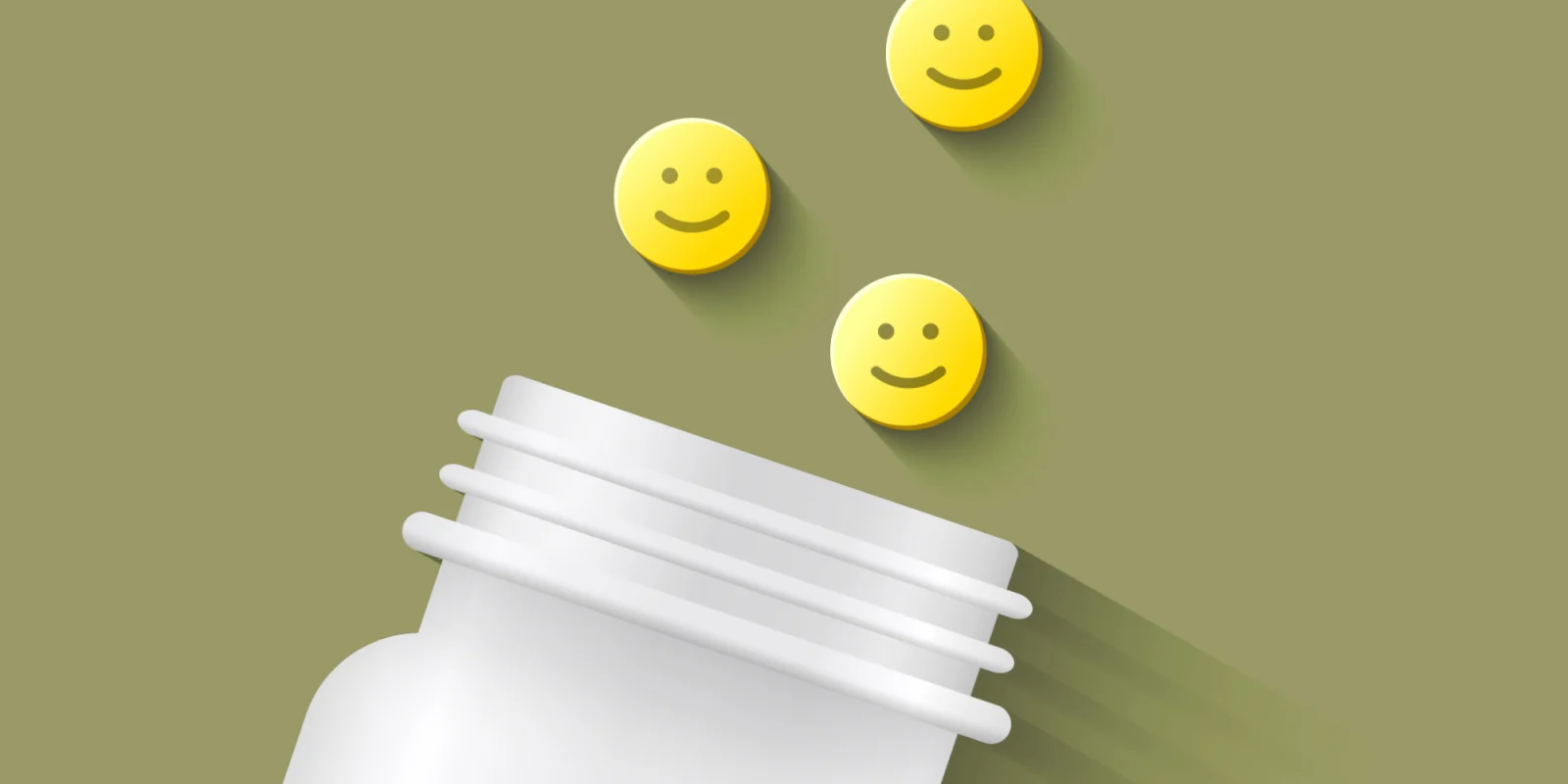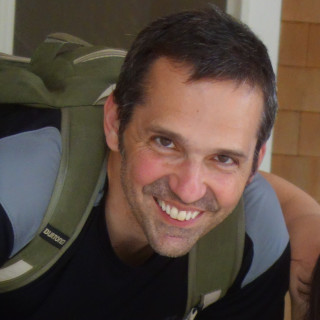
Little by little I’d broken my bad habit of promising my patients good health. The prospect of getting well didn’t thrill them…
– Céline, "Journey to the End of the Night," 1932
In the 1996 Canadian-American comedy film, "Brain Candy," a struggling pharmaceutical company develops a fast-acting antidepressant drug, GleeMONEX, that is so immediately potent, with no immediately apparent side effects, that it is rushed into production and becomes the cannabis-like media darling of its day. It makes people so happy they no longer care about their problems. And the creators of the drug achieve rock star status.
That is, until the single, catastrophic terminal side effect starts to manifest itself: anyone who takes GleeMONEX eventually lapses into a comatose paralytic reverie in which their happiest memory plays itself over and over in an infinite loop, and from which they cannot emerge. (An ingenious Hell – Sisyphus repeatedly rolling his boulder successfully up the hill and whooping it up to no end.)
In other words, the film quite (perhaps too) succinctly depicts Big Pharma’s and Big Insura’s greatest fantasies: an industry-enabled creation of a world of terminal dope addicts; that is, a world where the pain of living is utterly held at bay with a little pill that must be taken on a regular basis (Big Pharma’s dream), followed after a relatively brief time by rapidly terminal illness (Big Insura’s boardroom coup).
The movie, unfortunately for its creators, was about thirty years ahead of its time, and it never had the full subversive impact it should have.
For it was only a few weeks ago that the FDA approved its first happy pill for depression, the intranasal ketamine derivative with the bizarrely appropriate plosive name, Spravato. A medicine whose most recent clinical trial had to be terminated early because half of the research subjects developed debilitating psychosis and motor incoordination.
How did we get here?
A funny thing happened as we skipped our merry way through the business booms of the 1980s and 90s. Big Pharma, at the vanguard of the economic revolution, realized that along with definitively diagnosed disorders, such as hypertension and diabetes, vague and ubiquitous complaints, like pain and depression, like inattention, could be marketed to a population growing increasingly obsessed with its own health and its own (self-obsessed) "well-being." Big Pharma began to target, arguably to help create – via superficial media-hype – "disorders" that may or may not exist, but that, through happenstance, have come to be treated, usually with little to modest effect, with various, already existing (and approved) pharmacologic agents. And as a bonus the treatments made people addicted and high.
The marketing blitz was soon on, interestingly aimed primarily at hospitals and physicians. Let’s take ‘pain’ as an example.
With the full backing and support of Big Pharma it became dogma that "pain is under-recognized and undertreated." As medical students and residents, we were always instructed to treat any pain aggressively. If a patient was delirious, it must be due to undertreated pain. If a patient was "difficult," it must be due to undertreated pain. If a child was withdrawn, it must be due to undertreated pain. And again, the treatment couldn’t be easier. I can’t recall exactly how many times we had to give elderly grandmas Narcan, not because they had abused opiates, but because they had simply taken what was prescribed for them.
What is most disturbingly interesting is that the rise of prescription opiates coincided with the rise of the easy-to-prescribe SSRI antidepressant. Welcome, "Prozac Nation," and so was planted the seed of the eventual happy pill.
The "happy pill" notion, at first, was exposed as a lie. Or at least a false promise. Opiates, in fact, are downers. They do shut off pain, which leads to — as Pink Floyd described best — an overall "comfortably numb" sensation. A self-absorption so complete that a user often feels "at one" with the world around him or herself. "Like dirt," as one patient of mine self-effacingly described this pharmaco-meditative experience. Here is your brain "on" pain; here is your brain with no pain whatsoever.
But here’s the big question: With a new happy pill, how much depression will now become tolerable to the new human organism?
Antidepressants are often very effective pharmacologic agents for pain. But they work a bit differently than opiates, for the most part enhancing endogenous availability of three other chemical pathways: serotonin, dopamine, and norepinephrine, with serotonin and norepinephrine predominant. These, the serotonin and norepinephrine pathways, tend to alleviate depression and anxiety without any accompanying euphoria.
Dopamine, after opiates, is the key chemical now, the chemical targeted by Big Pharma. Dopamine is the neurochemical that makes most of us think we’re "happy." Any "rush" you have ever experienced is dopamine. Any "high" you have ever experienced is a combination of chemicals with dopamine predominant. Drugs that primarily enhance dopamine production generally make people feel better, often as an ancillary effect. Examples are drugs for Parkinson’s disease, stimulants, and steroids.
But, as one might imagine, there is a slight problem with dopamine. This in fact is the etiology of psychotic disorders such as schizophrenia. This is why Parkinson’s patients, on antiparkinsonian drugs after a time start to see "little green men" and become quite paranoid.
Most non-opiate, non-benzodiazepine, and non-alcohol drugs of abuse produce their effect by increasing "the next best thing": dopamine production. (Alcohol and benzoes quite literally just put you to sleep.) Cannabis, stimulants, cocaine, hallucinogens, gambling, all stimulate dopamine production. In the very short-term. And this is why they are addictive. The more frequently, and more potently, it is stimulated to do so from the outside, the less endogenous dopamine the brain produces. In other words, if I use cannabis (or cocaine, or stimulants, or acid, or mollies, or online gambling sites) for a period of time then stop, I will feel more lethargic and depressed (until my brain can recalibrate). This, of course, often leads to concentric cycles of greater and greater use.
“But dude, they sure do work fast.”
Indeed. And with the medicalization of cannabis, the soon-to-be widely available hallucinogen, ketamine, as a rapidly acting "anti"-depressant, the recent approval of the steroid/quasi-barbiturate brexanolone strictly for ‘"postpartum depression" (a classic example of everything old being new again, i.e. meet mother’s newest little helper, same as mother’s old little helper), and the enthusiastic fervor around "researching" long-standing and very well-known hallucinogens for both antidepressant and anti-pain potential, there is now a need to re-re-conceptualize the antidepressant as – truly – a happy pill.
The big problem, as we chase this new "holy grail," is how to define "happy." And more, how to standardize it. The "smiley face" pain scale come to mind, but this does not account for taste, so to speak, best summed up by the old adage, “One person’s tragedy is another person’s comedy." More importantly, it also does not account for the evolutionary need for depression. Like pain, depression is a protective factor. It is a signal that something is wrong. It is generally an altruistic motivator; it helps us provide empathy and compassion to others. A world without depression would be similar to a world without pain. And look where that has gotten us.
Elliott Martin, MD, is a board-certified adult and child psychiatrist at Newton-Wellesley Hospital, as well as the Director of Consultation and Emergency Psychiatric Services at Newton-Wellesley Hospital, and Assistant Clinical Professor of Psychiatry at Tufts University School of Medicine. He is a 2018–19 Doximity Author.






